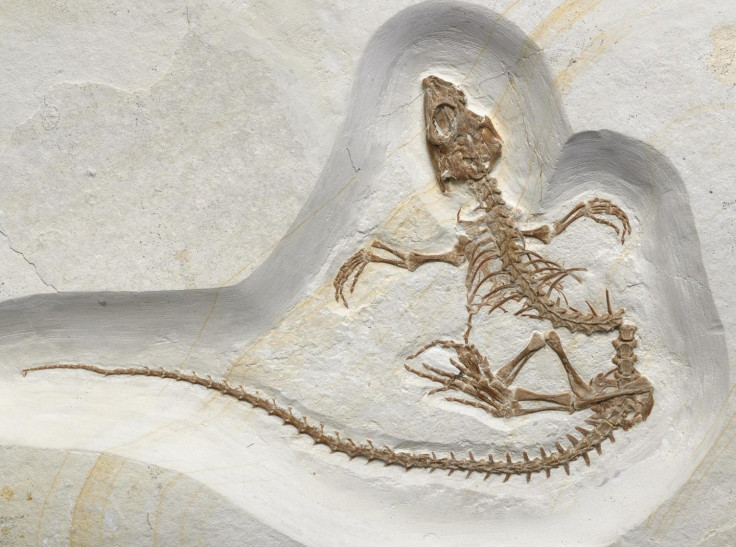155-million-year-old Jurassic underwater lizard fossil with a whip-like tail discovered
The fossil reveals how ancient animals evolved from land to sea creatures.

A newly-discovered fossil of a prehistoric underwater reptile that wandered the Earth 155 million years ago has allowed researchers to investigate how ancient animals evolved from land to sea creatures.
The underwater lizard's fossil revealed that the ancient sea creature was around a foot long and had a triangle-shaped head – features that are ideal for aquatic life. However, the ancient reptile, called Vadasaurus herzogi, also had fairly large limbs, linking the animal to land-living animals.
Vadasaurus, which in Latin means "wading lizard," was discovered in the limestone quarries of Germany, in an area that is believed to have once been covered in a shallow sea. The amazingly well-preserved fossil is also believed to be related to the sea-loving prehistoric marine reptile species called pleurosaurs, which lived over 150 million years ago, during the Jurassic Period. Vadasaurus and pleurosaurs share a few similar features such as their triangular-shaped skull and an elongated snout – an adaptation of these features are also found in modern aquatic animals such as whales and eels.
The fossil's similarities to pleurosaurs also indicates that Vadasaurus, like its relative, may also be one of the ancestors of modern sea animals.
"Anatomic and behavioral characteristics of modern groups of living things accumulated over long spans of time. Fossils can teach us a lot about that evolutionary history, including the order in which those features evolved and their adaptive role in a changing environment," said Gabriel Bever, who is a research associate at the American Museum of Natural History in New York and also serves as assistant professor of functional anatomy and evolution at the Johns Hopkins University School of Medicine.
"Anytime we can get a fossil like this that is so well preserved, and so significant in understanding a major environmental transition, it is very important," said Mark Norell, who chairs the paeleontology department at the American Museum of Natural History. "It's so important," he adds, "that we can consider Vadasaurus to be the Archaeopteryx of rynchocephalians."
According to Bever, the prehistoric sea lizard was likely an adult when it died. The fossil reveals that the ancient sea creature had 24 pre-sacral vertebrae, spanning from its head to the beginning of the tail. In comparison, pleurosaurus had over than 50 such back bones. According to Bever, Vadasaurus likely swam like a modern sea snake, with it spine moving in an undulating sort of motion.
Despite its various aquatic features, the ancient underwater reptile also possessed features found among land vertebrates, such as large limbs.
"Our data indicate that Vadasaurus is an early cousin of the pleurosaur," says Bever. "And these two reptiles are closely related to modern tuatara." The modern day tuatara is a lizard-like land-living reptile, commonly found on the coastal islands of New Zealand.
"We don't know exactly how much time Vadasaurus was spending on land versus in the water," Bever said. "It may be that the animal developed its aquatic adaptations for some other reason, and that these changes just happened to be advantageous for life in the water."
The findings of the research have been published in an online issue of the Royal Society Open Science.






















